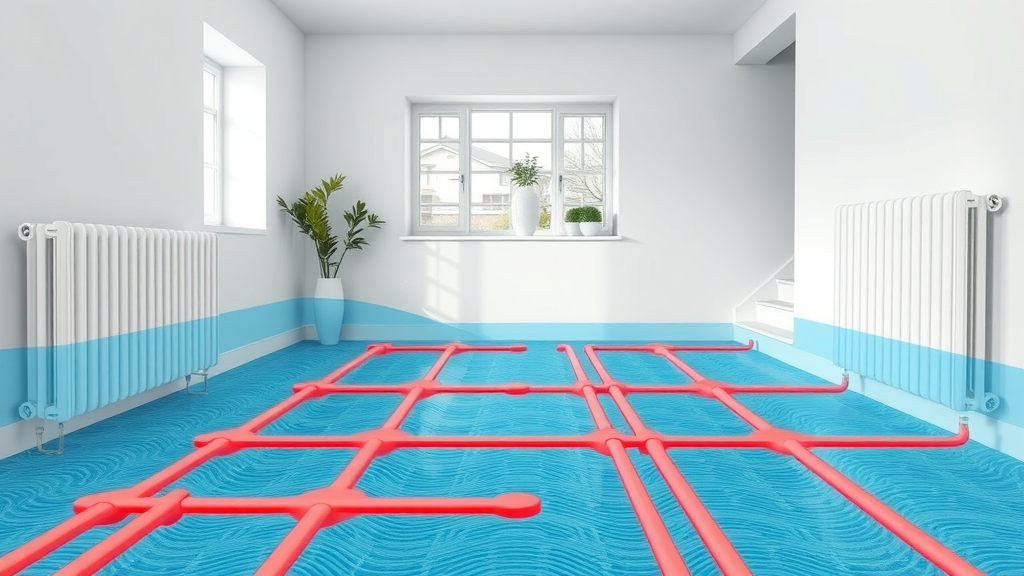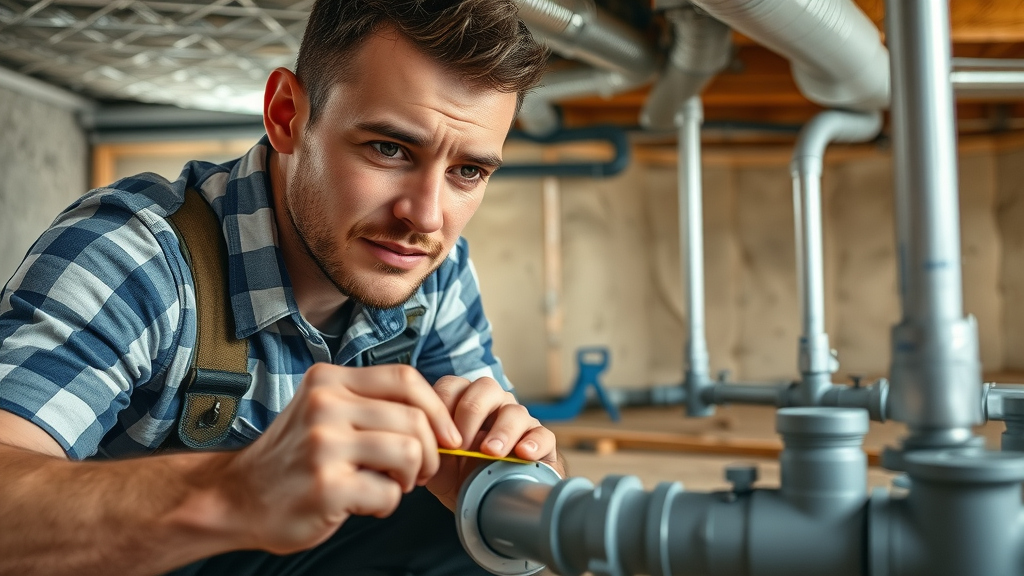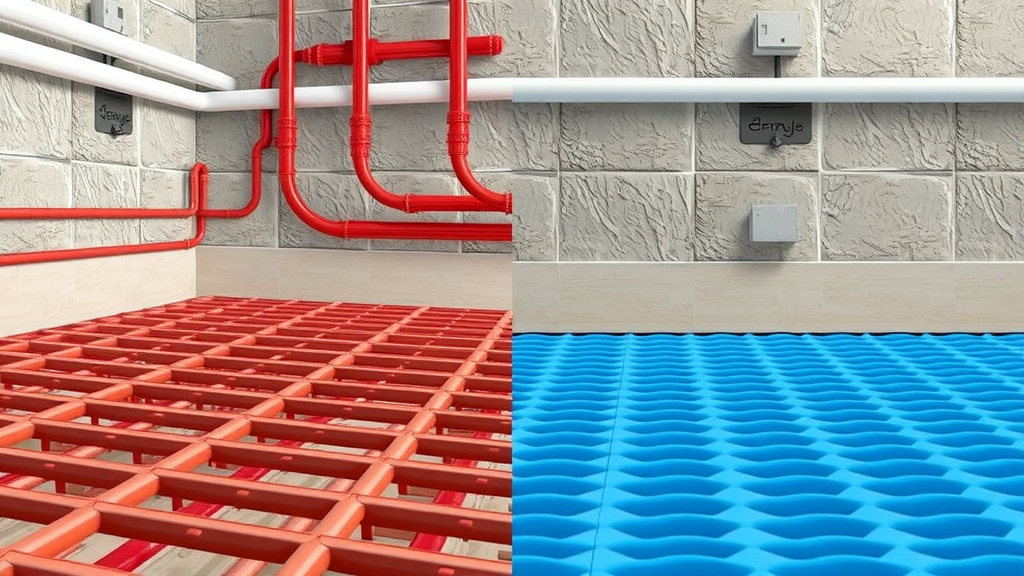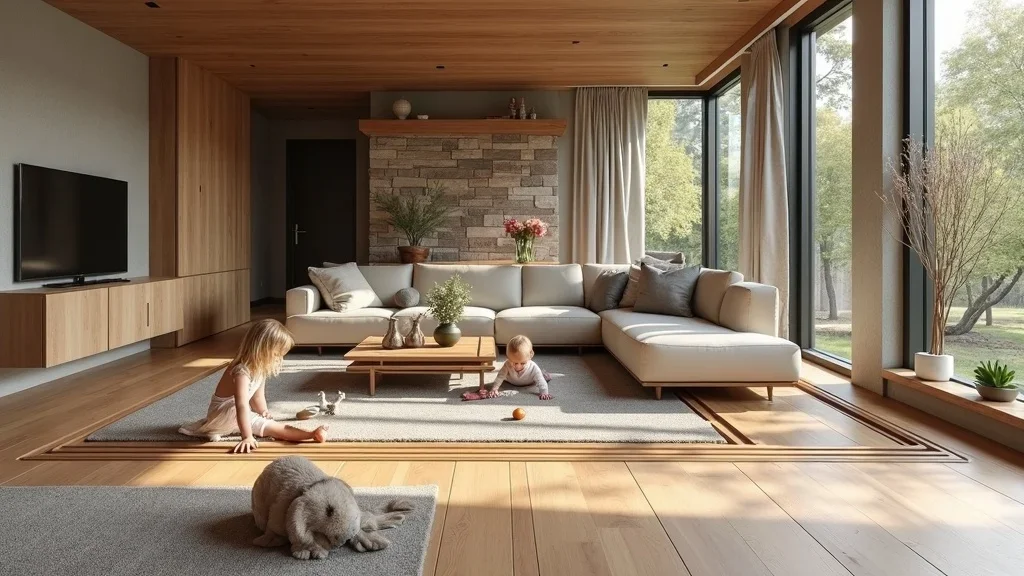Did you know: Upgrading to water underfloor heating Chesterfield can cut your home heating bills by as much as 30%, all while offering a cozy, even warmth that traditional radiators simply can’t match? If energy efficiency and comfort top your wishlist, you’re about to discover the solution that Chesterfield homeowners are raving about.

What You’ll Learn
- Why water underfloor heating is revolutionizing Chesterfield homes
- The top benefits of switching to underfloor heating
- Direct comparisons with traditional heating systems
- How underfloor heating systems actually work
- Key steps and considerations for installation
- How to find trustworthy Chesterfield installers
- Real testimonials from local residents
- FAQs and actionable advice for your project
Why Water Underfloor Heating Chesterfield Is Revolutionizing Local Homes
Water underfloor heating Chesterfield isn’t just a trend—it’s a game-changer for local homeowners looking for a smarter, energy efficient heating solution. By circulating warm water beneath your floors, this modern system ensures every corner of your room feels evenly heated, eliminating cold spots forever. Unlike conventional radiators that create uneven, patchy warmth, underfloor heating delivers an enveloping comfort that you can feel, whether you’re barefoot in the kitchen or relaxing in your living room.
Many Chesterfield residents report enormous reductions on their heating bills after making the switch, thanks to the system’s exceptional energy efficiency . These cost savings aren’t just short-lived: water underfloor heating systems are built to last, requiring less maintenance compared to traditional setups. Plus, the rising demand for eco-friendly homes makes underfloor heating a serious investment in your property’s value and sustainability. If you’re tired of high bills and lackluster heating performance, it’s time to explore how this advanced solution could transform your Chesterfield home.
What You’ll Gain by Switching to Water Underfloor Heating Chesterfield
- Lower energy bills and enhanced comfort
- Eco-friendly heating solutions that reduce your carbon footprint
- Flexible installation options for both new builds and retrofits
- Seamless integration with heat pumps, solar, and other renewables
- Long-term return on investment through improved efficiency and home value
Switching to water underfloor heating can immediately impact your home environment and wallet. The efficient heat output of these systems keeps your living spaces warm with less energy, translating into lower utility bills. You’ll also experience superior comfort, as the heat is distributed evenly across the entire floor rather than being localized near radiators. If sustainability matters to you, water-based underfloor systems can work in tandem with renewable energy sources, helping you further decrease environmental impact. The ability to customize layouts and controls ensures a perfect fit for every Chesterfield home.
Comparing Water Underfloor Heating to Traditional Heating Systems
| Feature | Water Underfloor Heating Chesterfield | Conventional Radiators |
|---|---|---|
| Energy Efficiency | Up to 30% improvement | Standard |
| Heat Distribution | Even, room-wide | Patchy, convective |
| Installation | Flexible, discreet | Visible, bulky |
| Maintenance | Low | Variable |
| Compatibility | Works with heat pumps | Gas/oil dependent |
When you compare water underfloor heating Chesterfield to traditional radiators, the benefits are clear. Underfloor systems deliver a more consistent and efficient heating experience, keeping every room comfortable throughout the season. Radiators, in contrast, tend to create warm spots and leave some areas colder—especially in larger homes or open-plan spaces. Additionally, underfloor installation is generally more visually appealing and doesn’t intrude on your interior design. Homeowners often notice that, after the initial upgrade, their heating bills drop significantly due to the system’s ability to maintain desired temperatures using less energy.

How Underfloor Heating Chesterfield Systems Work
Underfloor heating systems operate by circulating warm water through a series of pipes embedded beneath your floor. This gentle and efficient process creates radiant heat that rises evenly throughout the room, resulting in a comfortable environment from the ground up. The heating system is connected to your existing boiler, heat pump, or another energy source, providing flexible options to tailor the system to your home’s unique needs.
The beauty of water underfloor heating is its simplicity—a thermostat regulates water flow and temperature, delivering steady warmth without sudden fluctuations. This approach not only improves energy efficiency but also enhances living comfort and air quality, reducing dust circulation compared to forced-air systems. With quiet and unobtrusive operation, your household will barely notice the system—aside from the toasty feet and consistent heat.
The Science Behind Floor Heating and Water Circulation
The heart of any underfloor heating system is its network of durable pipes, expertly installed in precise patterns beneath your flooring. When you turn up your thermostat, a pump activates to move warm water through these pipes, creating efficient, low-temperature radiant heat that’s ideal for steady comfort. Unlike a traditional radiator, which needs to operate at much higher temperatures, water-based floor heating can maintain the same room warmth using less energy—especially effective when paired with a modern heat pump or renewable source heat system.
Temperature sensors and smart controls make required adjustments automatically, ensuring your home is always at your preferred temperature. This technology not only slashes your heating bill but also contributes to quieter, healthier indoor environments.

Choosing the Right Water Underfloor Heating System Chesterfield
- Wet underfloor heating vs. electric underfloor heating
- Determining optimum heating system for your property
- Importance of working with an experienced heating engineer
There’s no one-size-fits-all approach to underfloor heating system selection in Chesterfield. Wet underfloor heating —using water through pipes—is the most popular choice for whole-house installations, offering unbeatable efficiency and compatibility with modern heating solutions like heat pumps. Alternatively, electric underfloor heating systems, which utilize heating mats or cables, can be ideal for single rooms, bathrooms, or smaller renovation projects due to their slim profile and rapid heat-up times.
Collaborating with a qualified heating engineer ensures your chosen solution matches your home’s floor type, size, and energy source. An expert will assess site conditions, recommend the most efficient heating system, and address any unique challenges of your property, guaranteeing comfort, economy, and longevity for your new system.
Professional Underfloor Heating Installation in Chesterfield
What to Expect from Heating Installers and Engineers
Underfloor heating installation is a specialist task that benefits from local Chesterfield expertise. Skilled heating installers and qualified heating engineers provide a seamless process that begins with an in-depth survey and ends with testing and handover. Throughout your project, expect transparent communication, a tidy work environment, and full clarification regarding operation and maintenance.
Key steps include site assessment, insulation, careful placement of pipes or mats, pressure testing, and smart thermostat setup—which ensures your system is ready for optimal performance from day one. By hiring trusted local underfloor heating installers , you can rest assured that all safety regulations and supplier warranties are respected, giving you ongoing peace of mind.
Water Underfloor Heating Installers: Your Chesterfield Experts
- Local heating installers with proven expertise
- Certified underfloor heating installers
- Comprehensive aftercare and service packages
Choosing an experienced underfloor heating installer in Chesterfield guarantees a smooth design and installation journey. Local experts understand the unique construction features and climate considerations of Chesterfield homes, tailoring every floor heating system for maximum efficiency and comfort. Look for certifications and customer reviews when selecting your contractor, as strong aftercare service and support are essential for long-lasting system performance.
Many Chesterfield providers offer maintenance packages, regular system health checks, and rapid response times if repairs are ever needed. Partnering with dedicated heating installers ensures your investment in water underfloor heating pays off with years of reliable, energy-efficient warmth.

Exploring Different Types of Underfloor Heating Systems in Chesterfield
Wet Underfloor Heating vs. Electric Underfloor Heating
Wet underfloor heating and electric underfloor heating each have distinctive benefits and ideal applications. Wet systems use circulating water, are highly efficient, and are especially suited to larger or open-plan spaces where continuous, even warmth is desired. When paired with a source heat pump or other renewables, they unlock further energy savings. Electric systems, on the other hand, are quicker and less invasive to install—using mats or wires beneath floors—which makes them perfect for retrofits or smaller rooms like bathrooms and kitchens.
Both system types can deliver that sought-after underfoot comfort, but their operating costs, installation process, and integration options vary. Consulting with a Chesterfield heating engineer or installer will ensure your chosen heating solution delivers optimal performance for your property needs and lifestyle.

Integrating Water Underfloor Heating with State-of-the-Art Heating Systems
- Pairing with heat pump for efficient heating
- Utilizing renewable heating solutions
- Smart controls for complete heating solution
The best water underfloor heating systems can be seamlessly combined with the latest in sustainable home technologies. Pairing your floor system with a modern heat pump maximizes efficiency, as these pumps operate at lower temperatures ideal for radiant heating. Many Chesterfield residents are also adopting solar panels and advanced source heat options, supporting a fully eco-friendly household. Installing smart control systems gives you full mastery over your comfort, allowing for automatic schedules, remote adjustments, and energy monitoring—all from your phone or tablet.
By adopting these state-of-the-art combinations, Chesterfield homes can enjoy lower bills, greater comfort, and reduced emissions. With utility costs on the rise, an integrated approach to heating solutions ensures your investment is future-proof and sustainable.
Key Factors to Consider Before Installing Water Underfloor Heating Chesterfield
- Floor types and room sizes
- Existing heating solutions
- Budget considerations
- Long-term savings and efficiency
Not all homes are created equal, and a careful evaluation is essential before installing underfloor heating . The type of flooring—whether tile, wood, or carpet—affects heat transfer and system choice. Room sizes, ceiling heights, and insulation quality will influence your system’s output requirements. Assessing current central heating or hot water systems may reveal opportunities to integrate and optimize performance.
Budget is another crucial consideration: while water underfloor heating requires upfront investment, ongoing energy savings and increased property value can make it a smart long-term move. A professional heating engineer can break down pricing, options, and return on investment so you can make the right decision for your Chesterfield household.
Cost and Return on Investment: Water Underfloor Heating Chesterfield
| Aspect | Cost Savings Potential |
|---|---|
| Installation | Competitive, varies by size |
| Ongoing Energy Savings | Up to 30% |
| Increased Property Value | Yes |
For most Chesterfield homes, the upfront cost of water underfloor heating installation is offset by monthly bill reductions and the boost to property value. Estimates show ongoing savings of up to 30% compared to traditional radiator systems, making underfloor heating a future-ready investment. Collaborate with experienced heating installers to accurately forecast total costs, payback periods, and long-term benefits tailored to your property.
Real Customer Experiences: Water Underfloor Heating in Chesterfield Homes
"We noticed immediate warmth and much lower bills after our water underfloor heating Chesterfield installation." – Local homeowner in Chesterfield
Chesterfield homeowners frequently rave about increased comfort, silent operation, and significant reductions in their monthly heating bills after installing underfloor systems. Many mention that the investment becomes evident from their first winter—when even on the chilliest days, their whole house remains evenly snug, and they’re using less energy. Such positive feedback is echoed in local reviews, strengthening the case for water underfloor heating as Chesterfield’s heating solution of choice.
Energy-Efficient Heating Solutions for Chesterfield Homes
- Combining water underfloor with central heating
- Benefits of warm water heat sources
- Advanced control systems for efficiency
Smart Chesterfield homeowners are combining water underfloor heating with existing central heating systems to customize and boost efficiency. Warm water from renewable or traditional sources helps reduce boiler strain while providing consistent, cost-effective heat. With modern thermostats and zone controls, you can heat only occupied rooms, further lowering energy usage. Such adaptable systems support a greener home—and deliver the flexibility to meet the changing needs of Chesterfield families year-round.
Step-by-Step Guide: Water Underfloor Heating Installation Chesterfield
- Initial site survey by certified heating engineer: Professional assessment of floor types, room sizes, and ideal system design.
- Floor preparation and insulation: Ensures maximum heat transfer and efficiency.
- Pipework or electric mat installation: Careful placement and connection according to property layout.
- System testing and pressure check: Verifies leak-free, even operation before finish installation.
- Final floor finish and handover: System reviewed, customer trained, and warranties activated.
Each stage of the underfloor heating installation is handled by expert heating installers, guaranteeing a hassle-free experience and reliable, energy-efficient heated floors for years to come.
Curious what the process looks like? Search for recent local underfloor heating installation videos and witness firsthand how neat, quick, and professional a Chesterfield upgrade can be.
Check out side-by-side footage of wet underfloor heating vs. electric underfloor heating installs to see which fits your project best.
People Also Ask: Water Underfloor Heating Chesterfield
Is water underfloor heating more energy efficient than radiators?
Yes, water underfloor heating systems are typically up to 30% more energy efficient than traditional radiators. They operate at lower temperatures while delivering even, steady warmth throughout your space, which reduces energy waste and lowers your heating bill.
How long does underfloor heating installation take in Chesterfield?
The whole process, from the initial survey to final handover, usually takes 2–5 days for most Chesterfield homes. The timeline varies based on property size, system type, and whether the project is a retrofit or part of a new build.
Can I retrofit water underfloor heating into existing Chesterfield properties?
Absolutely. Modern water underfloor heating systems can be retrofitted into many existing Chesterfield properties. Installers use low-profile systems and advanced laying techniques to minimize disruption and maximize efficiency—even across various floor types.
Are there differences between wet and electric underfloor heating for Chesterfield homes?
Yes, wet systems circulate hot water and are ideal for larger or open-plan homes, while electric underfloor heating uses cables or mats and is often chosen for smaller areas or room-by-room upgrades. A heating engineer can help you compare costs, efficiency, and suitability for your space.
Top FAQs: Water Underfloor Heating Chesterfield
-
What maintenance is required for water underfloor heating?
Most systems need little maintenance—just occasional system checks or flushing every few years for peak efficiency. -
Can water underfloor heating be combined with heat pumps?
Yes, they pair exceptionally well and boost energy efficiency, especially in eco-conscious homes. -
Is water underfloor heating safe for pets and children?
Completely safe—the system is hidden and controlled, surface temperatures remain comfortable, and there are no exposed hot parts. -
How long does a water underfloor heating system last?
With quality installation, systems typically last between 25 and 50 years with minimal servicing. -
Is underfloor heating suitable for all floor types?
Yes—tile, stone, wood, laminate, and even carpeted floors can be heated; your installer will advise on the best configuration.
Ready to Upgrade? Get a Free Quote for Water Underfloor Heating Chesterfield Today
Take the first step towards a warmer, more energy-efficient home. Contact your trusted local heating installers now for a free, no-obligation quote on water underfloor heating Chesterfield . Enjoy lower bills, outstanding comfort, and a future-ready heating solution—starting today!
Act now: Get in touch with Chesterfield’s expert installers, arrange your survey, and transform your home with smarter, sustainable underfloor heating!
Sources
Upgrading to water underfloor heating in Chesterfield offers numerous benefits, including enhanced energy efficiency and consistent warmth throughout your home. For professional installation services, consider contacting Phennex Heating , a specialist plumbing and heating company based in Chesterfield with over 10 years of experience. They offer comprehensive services, including underfloor heating installation, boiler servicing, and air source heating solutions. Additionally, FlowTech UK specializes in underfloor heating and liquid floor screed installations across the Midlands, providing environmentally friendly and quick-drying solutions tailored to your needs. If you’re serious about enhancing your home’s heating efficiency, these resources will provide the expertise and services necessary to achieve optimal results.
 Add Row
Add Row  Add
Add 









Write A Comment